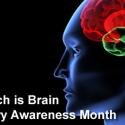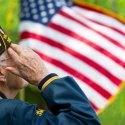Posted November 11th, 2014
By Guest Blogger
Last week, we shared a blog on the correlation between social consumption and elevated rates of anxiety and depression. A silver lining does exist in terms of social media over-usage for a specific segment of the population however; military veterans.
As reported by IAVA, 22 veterans commit suicide daily on average. Veteran suicides are exceeding 8,000 a year. Called an "epidemic" for post-9/11 service-members, a correlation seems to exist between these figures and the rate of veterans suffering from Post Traumatic Stress Disorder. Per the Department of Veterans Affairs, 30 percent of veterans who served in Iraq and Afghanistan have been diagnosed by the VA as suffering from PTSD. Surveys carried out by The Washington Post as well as by the Walter Reed Army Institute put the number at closer to 60 percent.
PTSD is rampant among this group of veterans because intense trauma, such as military combat, is among the disorder’s most common causes. Characterized by suicidal ideation, anxiety, depression, PTSD is linked between unemployment, suicide, and substance abuse. A corollary between veteran PTSD and rates of unemployment, homelessness and suicide, has not been conclusively established, although Post Traumatic Stress Disorder seems like an obvious factor. With an estimated 50 percent of veteran PTSD sufferers going untreated, and treatment success rates at only 40 percent, the disorder has often been called "the silent killer." Often, those closest to the individual suffering from PTSD are unaware that they are in distress.
Veterans with PTSD frequently leave a virtual trail of breadcrumbs, leading social media followers to conclude for themselves that the individual is suffering from the disorder. Social withdrawal is an indicator of the presence of the disorder. Social isolation can potentially be determined via spikes in social media activity between 11 P.M. and 5. A.M. Research has demonstrated that individuals more active on these sites late night have greater incidences of depressive episodes.
Social media posting language can also function as an indicator for the presence of PTSD. Anchor words such as "depression," "death," "pain," "life," and "suicide" can be construed as an indicator for the disorder. Similarly, a high volume of pictures demonstrating reckless behavior and an over consumption of drugs and alcohol should be viewed as a warning sign.
Suicidal behavior witnessed on social sites should not be ignored. Facebook has protocols in place for the observance of this type of behavior. After content is reported by a user, a team at Facebook will verify the authenticity of the material. This will then prompt a message to the original message that states "someone on Facebook is worried about you." The user is then presented with an option to speak directly with the National Suicide Prevention Lifeline. The knowledge that someone is concerned about you can go a long way. Rates of suicide are too high among the veteran population, the status quo must be challenged; the first step is accurately identifying who has PTSD and ensuring that they receive the services they need.
-Noah Perkins,
CMS, VA Home Loan Centers "http://vahomeloancenters.org/"





